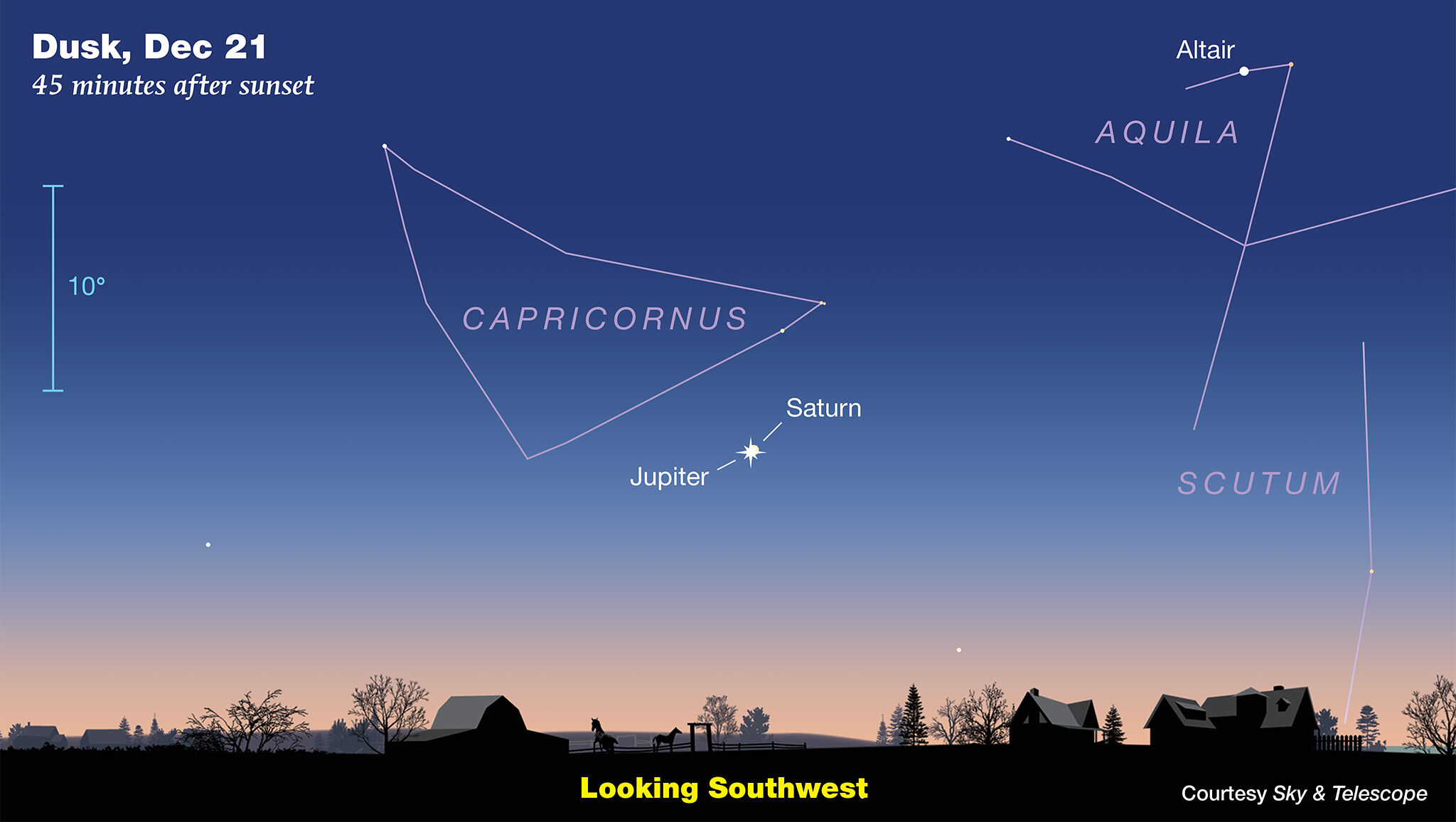
If you have been outside recently after it gets dark, you might have noticed a bright pair of “stars” in the sky lying southwest — or left — of where the sun sets.
In reality these are the two giant gas planets, Jupiter, the brighter of the two, and Saturn. Even though they are separated by hundreds of millions of miles in the solar system, they have been moving closer and closer to one another in our sky for quite awhile.
On Monday, Dec. 21, they will be visible in the southwest and at their closest approach to one another — a tenth-of-a-degree apart. The last time these two planets were this close, and visible, was 1226. They were similarly close in 1623, but likely not easily visible due to their close proximity to the sun.
They will be so close as to appear as a double planet. And to make this even more special, on the 21st at 5:02 a.m. EST, it is the Winter Solstice, the start of winter in the Northern hemisphere. The amount of daylight begins to increase each day following the Winter Solstice but the nights are long to enjoy the sky.
Astronomers call close groupings of astronomical objects conjunctions. And because this planetary conjunction is so close between Jupiter and Saturn it is known as a Great Conjunction.
To view this celestial spectacle is easy, just look in the southwest sky as it gets dark after sunset. Pick a viewing spot that has a clear view of the horizon and is free of trees, buildings and bright lights. If you have binoculars it will enhance the view but the real treat comes with viewing in a telescope. Amateur telescopes properly adjusted will be able to view Jupiter and Saturn in the same field of view.
Here are tips from NASA on how to photograph this sky treat which can be done with any camera.
Quite frankly, our weather in the DMV for Monday looks to be poor with the National Weather Service forecasting “A chance of rain showers before 1 a.m., then a slight chance of rain and snow showers. Mostly cloudy, with a low around 36. Chance of precipitation is 40%.”
Even with this forecast it is worth a visual look to see if there are any breaks in the clouds. If it is “No Joy” (in other words, the clouds win) all is not lost. You can tune in to Carnegie Astronomy’s live coverage of the Great Conjunction starting at 8 p.m. EST.
You can also enjoy the view when the clouds clear as the two planets will remain close, and moving apart, until they are no longer visible due to being lower in the sky and in bright skies.
Have a happy holiday season and stay safe and healthy.
Follow me on Twitter @SkyGuyinVA and my daily blog.







